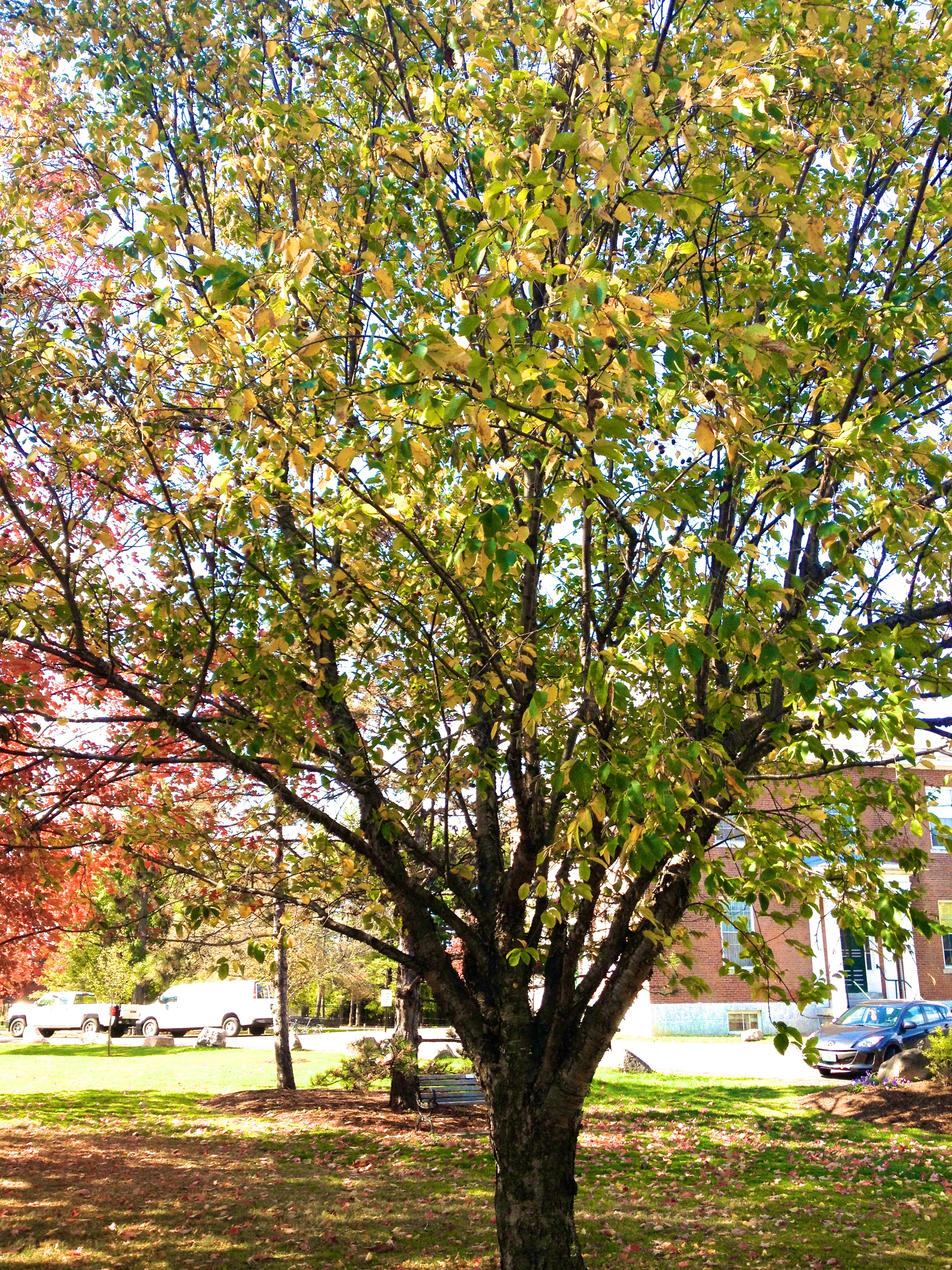Yellow Birch : Overview

- This is one of two yellow birches located on UVM campus. The leaves are just beginning to change into a beautiful yellow. (Paisley, 2014)
By Emma Paisley
Introduction
The yellow birch, or Betula alleghaniensis. is the most valuable tree of native birches in the United States as well as parts of Canada. Betula is Latin for birch tree and describes the genus of the tree. Alleghaniensis is the species name and indicates the tree is native to the Allegheny Mountains. It is also known as the silver birch or swamp birch . They tend to live in colder climates with high precipitation and do very well in the cold. The yellow birch is one the largest hardwoods in the North East. Its seedlings are very popular among wild animals, including moose, deer, and some species of birds. Something interesting one could see are the roots propped on rocks or elevated above rotted stumps because their seeds like to germinate in places other than the forest floor. This includes cracks in rocks, mossy logs, and decaying wood. The yellow birch is very similar to the cherry birch, whose bark is a lighter grayish brown. They also do better in drier and more arid climates than the yellow birch.
If one visits the Tree Inventory Map located on the UVM webpage, one will realize there are only TWO yellow birches on campus. The reason for this is undiscovered, but it would be interesting to find out.
